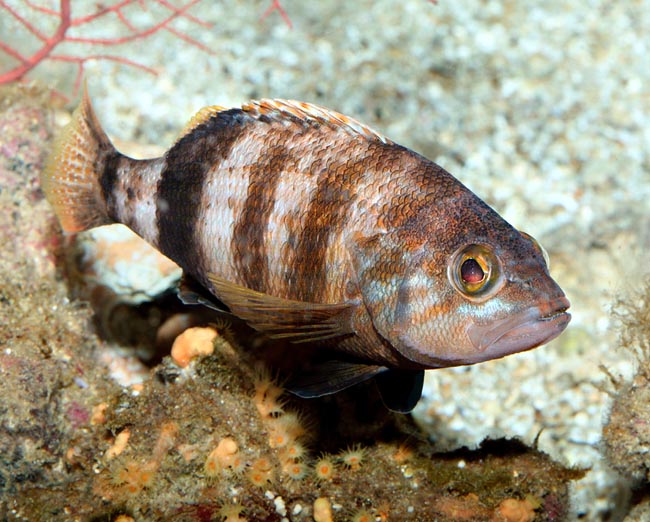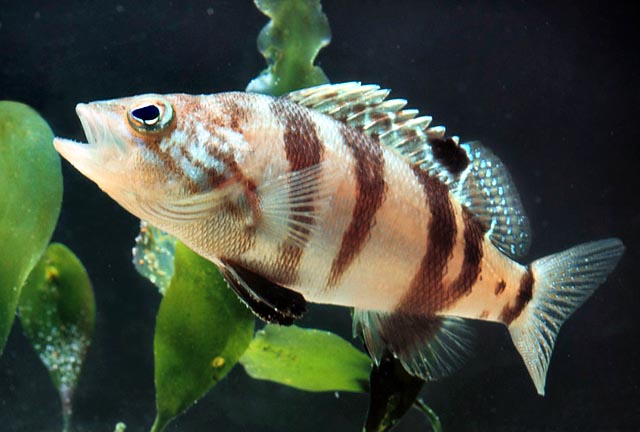Family : Serranidae

Text © Giuseppe Mazza

English translation by Mario Beltramini

Serranus hepatus is the smallest Mediterranean member of the Serranidae family © Giuseppe Mazza
The name of the genus comes from the Latin “serra” = saw, with reference to the saw-toothed dorsal fin, not to forget the various spines.
The name of the species comes from the Latin “hepar, hépatis” = liver, of the liver, with reference to the dominant colour.
Zoogeography
It is present in the Mediterranean and, after Gibraltar Strait, along the eastern Atlantic coast, from the Biscay Gulf up to Senegal, Canary Islands included.
Ecology-Habitat
It can be met along the coasts, among the rocks, in the Posidonias (Posidonia oceanica) prairies, but usually it prefers the muddy and detrital sea-beds, even if it seldom goes down under the 100 m.
It mainly carries on a solitary life.
Morpho-physiology
It is the smallest Mediterranean member of the family of the Serranidae. Even if they have caught record 25 cm specimens, it usually measures 15 cm, and even less along the Italian coasts, where it contents of 10-12 cm.
The stocky body is more rounded than that of the Serranus scriba and of the Serranus cabrilla but has the same spiny structure. Only one dorsal with 10 spiny rays, the third taller and then decreasing for emphasizing the separation from the 11-12 soft rays, in correspondence with the typical black spot; one shorter anal with 3 spines and 7 unarmed rays and the ventral ones with one spine only.

Typical are the black ventral fins and the black dot halfway of the dorsal fin © Giuseppe Mazza
Ethology-Reproductive Biology
In spite of the modest size, the Serranus hepatus is much greedy. It hunts small fishes, cephalopods, crustaceans and annelids.
It is a hermaphrodite species. As it happens for the Serranus scriba and the Serranus cabrilla the eggs and the sperm mature at the same time and the self-fecundation is therefore, theoretically, possible. In the Mediterranean, it reproduces during the spring and in summer.
The eggs are pelagic and also the various larval stages are often carried offshore with the plankton by the currents. Only when the youngs reach the length of 15-17 mm they get closer to the coasts, proceeding immediately towards the bottom. The vulnerability index of this species is of 31 over 100.
Synonyms
Labrus hepatus Linnaeus, 1758; Paracentropristis hepatus Linnaeus, 1758.
→ For general information about FISH please click here.
→ For general information about BONY FISH please click here
→ For general information about CARTILAGINOUS FISH please click here.
→ To appreciate the BIODIVERSITY of BONY FISH please click here.
→ To appreciate the BIODIVERSITY of CARTILAGINOUS FISH please click here.
